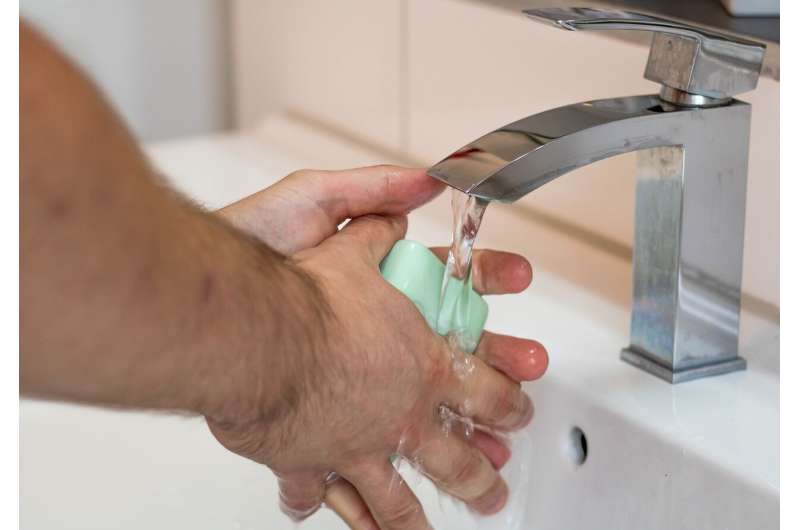
Hygiene was a significant part of the health measures to control the coronavirus at the start of the pandemic. But as evidence began to emerge of airborne spread, the focus switched to masks and, more recently, ventilation.
Indeed, for some the focus has switched so sharply from surface transmission to airborne transmission that they now view hygiene measures—such as hand gelling and deep cleaning handrails—as pointless. Derek Thomson, a writer for The Atlantic, coined the term “hygiene theater” to describe these sorts of “rituals that make us feel safer but don’t actually do much to reduce risk.”
So are these hygiene measures really giving us a false sense of security? Are they a waste of time and money? And why do we even bother with hygiene when COVID mainly spreads through the air?
Since the days of Florence Nightingale, hygiene, and specifically hand hygiene, has been recognized as an effective measure to stop the spread of infectious disease. Over the last year, public health advice has recommended hand hygiene to break the cycle of COVID transmission along with other measures, such as distancing and mask wearing. There has been less focus on explaining how hands can act as an intermediary for infection transmission.
SARS-CoV-2 is one of the more resistant coronaviruses and can survive on glass, steel and both polymer and paper banknotes for up to 28 days, according to a recent review. We aren’t certain what the minimum infectious dose of SARS-CoV-2 is, but recent reports suggest that only a few hundred virus particles (called “virions”) are enough to infect a susceptible person. And our face is a handy portal for these viruses to enter our body.
Many infections begin when we touch our mouth, nose or eyes. Scientists researching this behavior find that people are constantly touching their faces. Respiratory viruses, such as influenza and SARS-CoV-2, while spread primarily by respiratory droplets can also be spread by contaminated hands touching the mucous membranes of the nose, mouth and eyes.
The risk of this happening depends on several factors including the degree of hand contamination, the rate of hand contact with our nose, eyes and mouth, and the infectivity of the virus strain. This is particularly relevant at present as new variants, such as delta, with greater infectivity and transmissibility, continue to emerge.
The consequences of face touching as a potential for self-infection with respiratory viruses is not a new concept. Most recently, researchers observed 100 YouTube videos of random people and reported that the average facial contact was 22 contacts an hour—higher in men and increasing with fatigue and distraction. The researchers argued that changing personal behavior is a simple and cost-effective way to reduce the risk of catching an infectious disease.
Swiss cheese model
COVID control needs a multi-layered prevention approach comprising personal and shared interventions as outlined in the so-called Swiss cheese model of risk. No measure is perfect (it has holes, like a slice of Swiss cheese) but combining different measures has a much greater chance of stopping the virus from spreading.
The eyes, nose and mouth provide an easy route of entry to the body for a virus such as SARS-CoV-2. While respiratory droplet and airborne spread have been demonstrated to be the main mechanism of COVID spread, researchers continue to investigate the relative contribution of surfaces and hands to the COVID infection cycle.
And the World Health Organization has not ruled out surface spread of COVID. Even if it only accounts for a small percentage of transmission, a small percentage of a big number (about half a million new cases per day) is still a big number.
Source: Read Full Article
